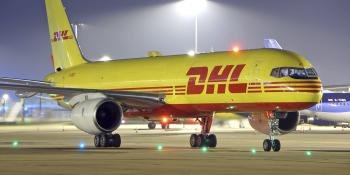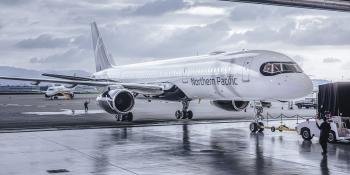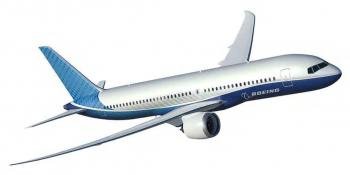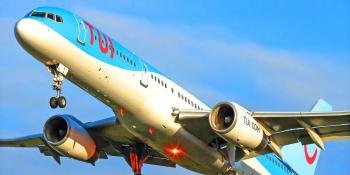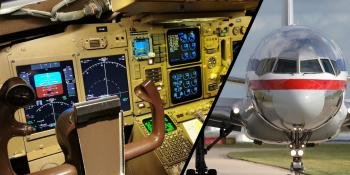Boeing 757
Discover the history and versatility of the Boeing 757, a popular narrowbody airliner known for its efficiency and range. Learn about its passenger and cargo variants, as well as its continued relevance in the aviation industry today.
The Boeing 757 is a twin-engine narrowbody airliner. The aircraft was designed to be more capable and economical than the 727, which was a highly successful trijet aircraft. With a longer fuselage, redesigned cabin, and improved construction techniques, the 757 was built to have better fuel efficiency and a higher passenger capacity. The aircraft was constructed with lighter materials, redesigned wings, and the use of computer-aided design technology. The 757's high thrust-to-weight ratio allowed it to take off from shorter runways and airfields with hot and high conditions.
Boeing's decision to use a twin-engine approach was based on the greater fuel economics of the 757 compared to its trijet predecessor. The initial proposal called for a fuselage similar in length to the Boeing 727, but engineers decided to build the first series with a longer fuselage, making the 757-200 2ft 1in longer than the 727-200. Despite this, the 757 retained its single aisle configuration, but with a completely redesigned cabin, allowing it to typically seat 239 passengers, 50 more than the 727.
Boeing's special assembly line at its Renton site was constructed to produce the 757. During the early stages of development, initial orders for the 757 came from British Airways and American carrier Eastern Air Lines, with both opting for Rolls-Royce RB-211-535C engines. This marked the first time that a Boeing civilian airliner had been launched with powerplants produced outside the United States. Pratt & Whitney also offered the PW 2037 turbofan, which Delta Air Lines later adopted. A version of the General Electric CF6-32 was also promoted, but there was insufficient commercial demand, and the project was eventually abandoned.
The prototype, N757A, was rolled out on January 13, 1982, and the maiden flight took place on February 19 of the same year. Certification by the US Federal Aviation Administration followed on December 21, and the first customer delivery to Eastern Air Lines took place the following day. Eastern wasted no time in putting its new flagship to work, with the inaugural revenue service of the 757 on January 1, 1983. British Airways began using the narrowbody for its London to Belfast link the following month, replacing the flag carrier's Hawker Siddeley Trident 3Bs.
Initial customers of the type confirmed its improved dispatch reliability and quieter performance compared with previous-generation jets. Airlines reported lower operating costs due to improved fuel burn and the use of a two-crew cockpit. Compared with the 707 and 727, the twinjet burnt 42% and 40% less fuel per seat, respectively. While loading and unloading a single-aisle aircraft of this size took longer than previous-generation models, this was largely cancelled out by improved route performance.
The 757 proved to be a popular choice for holiday charter operators and European charter airlines, such as Monarch Airlines, Air Europe, Air 2000, Air Holland, and LTU International. Although it was not an instant success, the 757 went on to become a highly successful aircraft for Boeing, with over 1,050 aircraft produced between 1981 and 2004. The last 757 was delivered to Shanghai Airlines in 2005. The 757 remains a popular aircraft with airlines and is widely used for short to medium-haul flights.
The Boeing 757 was initially offered with large freight doors as an option, but few operators chose to order them. However, in December 1985, a freighter variant was launched after logistics giant UPS ordered 20 examples. In addition to the freighter variant, a passenger/cargo -200M combi was also offered, but only one example was built and delivered to Royal Nepal Airlines in September 1988.
More recently, the surge in demand for air freight due to the boom in e-commerce has increased the appeal of the 757's cargo capabilities. The aircraft's relatively low cost of operation and ability to accommodate up to 15 standard pallets, along with capacious belly holds for smaller cargo, make it a popular choice for operators such as FedEx, UPS, and DHL, which together boast more than 200 examples. China's SF Airlines also operates an impressive fleet of 37 757s.
Most of these cargo aircraft were converted from regular passenger versions, with conversions typically undertaken by companies such as Precision Aircraft Solutions, ST Aerospace, and Israel Aerospace Industries. The 757's forward cargo door is the same size as that fitted to the Boeing 707 and 727, and most examples have been fitted with a glass cockpit and winglets.
Production of the 757 came to a halt in October 2004, after 23 years and a total of 1,050 aircraft produced. The final delivery was made to Shanghai Airlines, which took delivery of its first 757 in August 1989. While the 757 has found new life as a cargo hauler, it still plays a major role in the fleets of many big name airlines in its traditional passenger form.
Despite false starts around Boeing's 'New Midsize Airplane' (NMA), which was widely regarded as a replacement for the 757, the aircraft continues to serve as an important part of the fleet strategy for many carriers. The pandemic has forced many passenger examples to be removed from active fleets, but a notable number remain in service, such as United's transatlantic routes and Jet2.com's flights to holiday destinations in the Mediterranean. However, the Airbus A321XLR is likely to fill some of the void for operators looking for a replacement for the 757.


